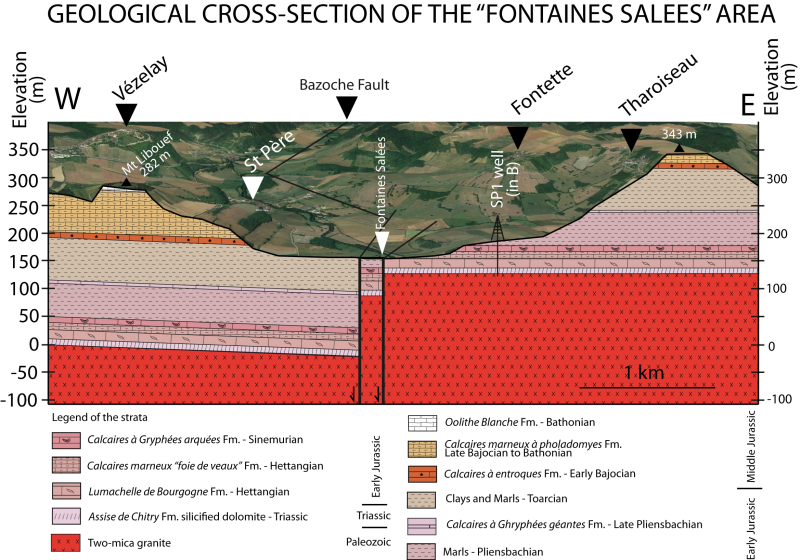Outgassing of helium and hydrogen: shedding light on the mechanisms of ascent to the surface
A study published in Geochemistry, Geophysics, Geosystems reveals certain mechanisms for the natural degassing of helium (He) and hydrogen (H2) from underground to the surface. By combining geophysical and geochemical approaches, the researchers are revealing how these gases follow pathways along deep faults, until they emerge at the surface in springs thousands of years old. This is a breakthrough in our understanding of deep-sea dynamics and complex geological interfaces.
This interdisciplinary study was carried out at the Fontaines Salées site in the Yonne department. This exceptional site, at the crossroads of earth sciences and archaeology, is home to Neolithic wells dating back 4,300 years. Some of them still show regular outgassing in the form of gaseous bubbles, mainly composed of nitrogen, but with very high concentrations of helium (up to 5%v).
Gases with multiple origins
By combining geophysical imaging, measurements of gas concentrations in the soil, isotope analyses and geochemical modelling, the scientists sought to understand the impact of the geological structure on the origin and upwelling mechanisms of these gases, as well as the biological interactions with the soil during this upwelling.
Two types of origin for the gases emitted have been identified: geological (particularly for radiogenic He) and potentially biological (particularly for H2). The site is a natural laboratory for understanding how these gases migrate to the surface.

West-East geological section showing the location of the Fontaines Salées. Rights Reserved
Faults and interfaces: the secret gas routes
The study enabled us to reconstruct the structural layout of the subsoil, revealing two sub-parallel normal faults and a multi-metric zone located at a depth of 10-30 m. This zone, identified by electrical and seismic methods, is interpreted as a water reservoir enriched in helium-rich nitrogen gas bubbles. This zone, identified by electrical and seismic methods, is interpreted as a water reservoir enriched in helium-rich nitrogen gas bubbles. The concentration of helium in the ground, reaching 1% on a ‘hot spot’, corroborates this hypothesis. Gas migration seems to follow a preferential path by advection of water along the fault, until it emerges in the wells, where helium concentrations reach 5% in the free gas extracted.
A new perspective on the underlying dynamics
The data has enabled a simple geochemical model to be constructed to explain the geochemical signature of He-rich nitrogen bubble gas by the exsolution of dissolved nitrogen during the paleo-recharge of meteoric waters in the Morvan.
When this water infiltrates several kilometres below the surface, it becomes loaded with radiogenic helium before migrating towards the basement-cover interface and rising to the surface via faults. As for hydrogen (H2), its greater solubility suggests a mechanism for its ascent to the surface based on its diffusion through the clays and its biological production/consumption depending on soil aeration. However, advective ascent cannot be ruled out in certain areas.
These results shed new light on the dynamics of basement-cover interfaces and offer prospects for monitoring tectonic activity or prospecting for natural resources such as helium or hydrogen.
More
Reference
Deciphering Degassing Mechanisms of He and at the Sedimentary Basin-Basement Interface by Surface Geophysics and Gas Geochemistry. Geochemistry, Geophysics, Geosystems, 2025
Contact
Source: CNRS Terre & Univers.





